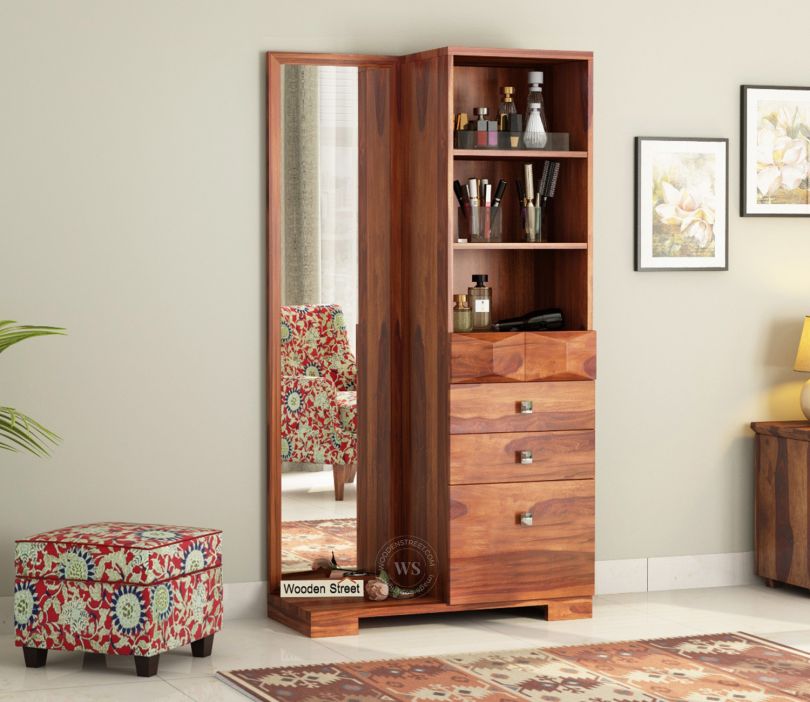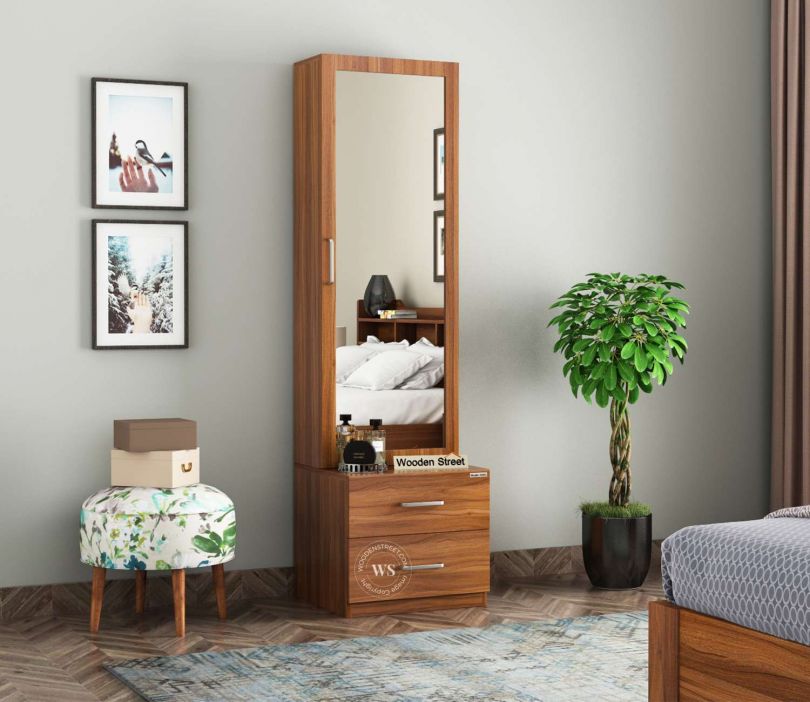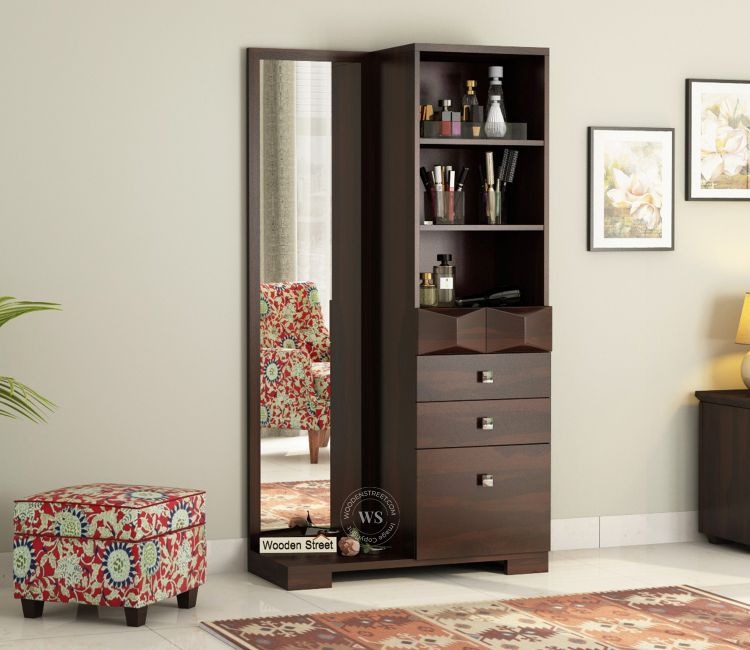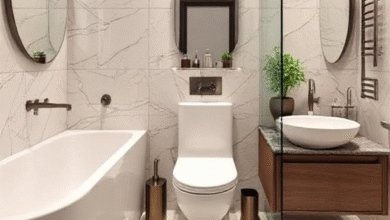How to Choose the Best Dressing Table Material | Wooden Street

Selecting the perfect dressing table for your bedroom is more than just a matter of aesthetics—it’s about finding a piece that combines functionality, durability, and style. The material of a dressing table plays a pivotal role in determining its longevity, maintenance needs, and overall appeal. With brands like Wooden Street offering a wide range of wooden dressing tables, the choices can feel overwhelming. This article will guide you through the key factors to consider when choosing the best material for your dresser, ensuring it complements your space and meets your needs.
Why Material Matters for Your Dressing Table
The material of a dressing table impacts its durability, maintenance, and how well it blends with your bedroom decor. Whether you’re drawn to the timeless elegance of wood, the sleek modernity of glass, or the affordability of engineered materials, each option has unique characteristics. Understanding these will help you make an informed decision that balances practicality and style.
1. Solid Wood: Timeless Elegance and Durability
Solid wood is a classic choice for wooden dressing tables, offering unmatched durability and a warm, natural aesthetic. Popular woods like sheesham, teak, and mango wood are favored for their strength and beautiful grain patterns. Wooden Street, for instance, specializes in crafting wooden dressing tables that showcase the rich textures of these materials, making them a focal point in any bedroom.
Pros:
-
Durability: Solid wood is sturdy and can last for decades with proper care.
-
Aesthetic Appeal: The natural grain and warm tones add a touch of sophistication.
-
Customizability: Wood can be stained, painted, or polished to match your decor.
-
Eco-Friendly: Sourced sustainably, it’s an environmentally conscious choice.
Cons:
-
Cost: Solid wood dressers are often more expensive.
-
Maintenance: Requires regular polishing and protection from moisture.
Best For: Those seeking a long-term investment and a classic, elegant look.
2. Engineered Wood: Budget-Friendly and Versatile
Engineered wood, such as MDF (Medium-Density Fiberboard) or plywood, is a popular alternative to solid wood. These materials are made by compressing wood fibers or layers, offering a cost-effective yet stylish option. Many dressing tables from Wooden Street use high-quality engineered wood, providing a balance of affordability and durability.
Pros:
-
Affordability: Significantly cheaper than solid wood.
-
Versatility: Available in various finishes, including laminates and veneers.
-
Lightweight: Easier to move and rearrange.
-
Moisture Resistance: Often treated to resist warping in humid conditions.
Cons:
-
Less Durable: Not as long-lasting as solid wood.
-
Aesthetic Limitations: May lack the natural charm of solid wood.
Best For: Budget-conscious buyers or those in humid climates.
3. Metal: Modern and Industrial Charm
Metal dressing tables are gaining popularity for their sleek, contemporary look. Often combined with glass or wood accents, metal frames add an industrial or minimalist vibe to a bedroom. While Wooden Street primarily focuses on wooden dressing tables, some designs incorporate metal elements for a modern twist.
Pros:
-
Durability: Highly resistant to wear and tear.
-
Low Maintenance: Easy to clean and resistant to stains.
-
Modern Aesthetic: Perfect for urban or industrial-style interiors.
Cons:
-
Cold Appearance: May feel less warm or inviting.
-
Limited Customization: Fewer finish options compared to wood.
Best For: Modern homes or those seeking a low-maintenance dresser.
4. Glass: Sleek and Sophisticated
Glass dressing tables exude luxury and modernity, often used in combination with metal or wood frames. They create an illusion of space, making them ideal for smaller bedrooms. While Wooden Street focuses on wood, some retailers offer glass-topped dressers for a chic, reflective finish.
Pros:
-
Aesthetic Appeal: Adds a luxurious, airy feel to the room.
-
Easy to Clean: A quick wipe keeps it spotless.
-
Space-Enhancing: Reflective surfaces make small spaces feel larger.
Cons:
-
Fragility: Prone to scratches or breakage if not handled carefully.
-
High Maintenance: Shows fingerprints and smudges easily.
Best For: Small bedrooms or those aiming for a glamorous, modern look.
5. Particle Board: Affordable but Basic
Particle board is a low-cost material made from wood chips and resin. It’s commonly used in budget-friendly dressing tables and is often covered with laminates to mimic the look of wood. While not a primary offering from Wooden Street, particle board dressers are widely available in the market.
Pros:
-
Cost-Effective: The most affordable option.
-
Lightweight: Easy to move or assemble.
-
Variety of Finishes: Laminates offer multiple color options.
Cons:
-
Low Durability: Prone to damage from moisture or heavy use.
-
Basic Aesthetic: Lacks the premium feel of solid wood or glass.
Best For: Temporary setups or extremely tight budgets.
Key Factors to Consider When Choosing a Dressing Table Material
When selecting the material for your dressing table, consider the following factors to ensure it aligns with your lifestyle and preferences:
1. Durability and Longevity
If you’re investing in a dresser for long-term use, solid wood or high-quality engineered wood is ideal. Wooden Street offers robust wooden dressing tables in sheesham or teak, ensuring they withstand daily wear and tear.
2. Maintenance Requirements
Consider how much time you’re willing to dedicate to upkeep. Glass and metal dressing tables are low-maintenance but show smudges, while solid wood requires regular polishing to maintain its luster.
3. Aesthetic Compatibility
Your dressing table should complement your bedroom’s decor. For a rustic or traditional vibe, opt for wooden dressing tables from Wooden Street. For modern spaces, glass or metal may be more suitable.
4. Budget
Set a realistic budget. Solid wood is pricier but offers longevity, while engineered wood or particle board provides affordable alternatives without compromising too much on style.
5. Space and Functionality
Smaller bedrooms benefit from glass or compact dressers, while larger spaces can accommodate solid wood dressing tables with ample storage. Wooden Street offers a variety of sizes to suit different room dimensions.
Why Choose Wooden Street for Your Dressing Table?
Wooden Street is a trusted name in furniture, offering a curated selection of wooden dressing tables crafted from high-quality materials like sheesham, teak, and engineered wood. Their designs range from minimalist to ornate, catering to diverse tastes. With customizable finishes and sizes, Wooden Street ensures your dresser fits seamlessly into your bedroom while providing practical storage solutions.
Conclusion
Choosing the best material for your dressing table depends on your budget, style preferences, and maintenance willingness. Solid wood offers timeless elegance, engineered wood balances cost and quality, metal adds a modern edge, glass exudes luxury, and particle board suits tight budgets. Brands like Wooden Street make the decision easier by offering high-quality wooden dressing tables that combine durability and style. Evaluate your needs, consider the pros and cons of each material, and select a dresser that enhances both your bedroom’s aesthetic and functionality.






